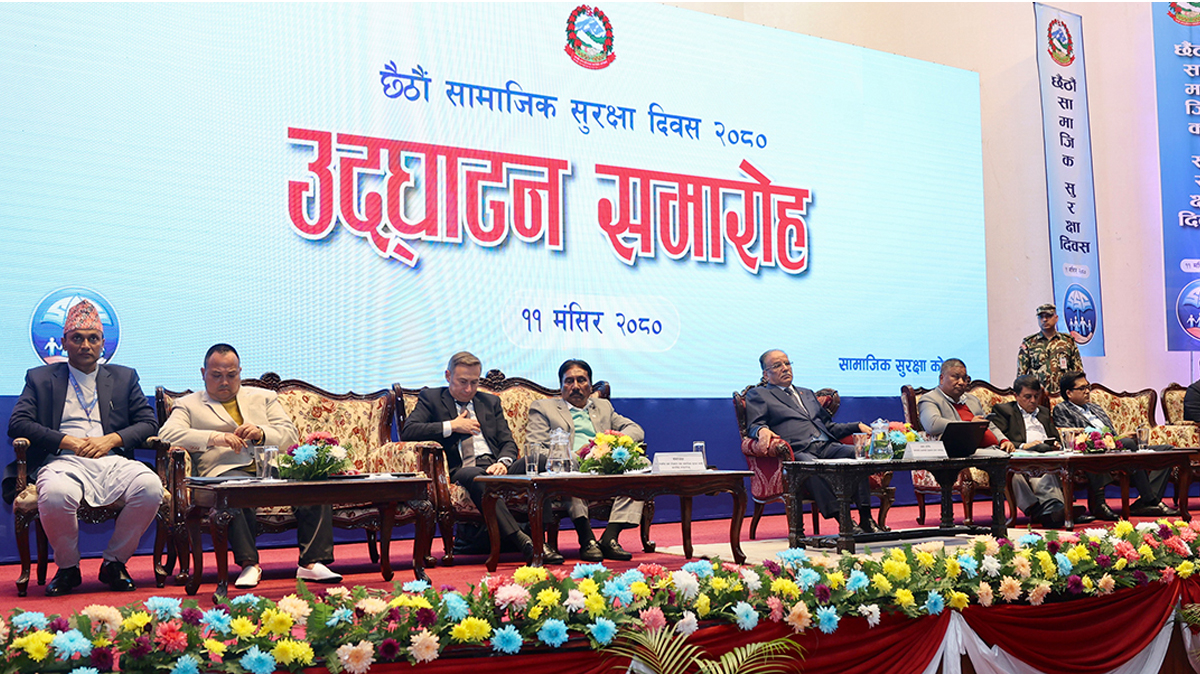
Challenges and Prospects: A Critical Evaluation of Nepal’s Contribution-Based SSF after Five Years

Five years have elapsed since the implementation of Nepal’s Contribution-Based Social Security Fund (SSF), yet the anticipated surge in interest from both employers and contributors has not materialized. Despite the introduction of various schemes by the SSF each year, a substantial portion of the workforce and employers remains indifferent. This lack of enthusiasm raises questions about the viability and justification of the SSF, while officials remain optimistic that interest will grow over time.
Background:
The government unveiled the contribution-based SSF on November 27, 2018, with the aim of providing social security coverage to workers in the unorganized sector, foreign employment workers, and those in agriculture. A special plan was launched in April of the following year to target these sectors. However, the response has been tepid, with only foreign employment workers showing a notable increase in participation, numbering 466,622 so far. Unorganized sector workers, unfortunately, remain unconnected to the fund.
Statistics and Participation:
According to the National Economic Census 2018, which recorded 4.3 million workers across 923,300 institutions nationwide, only 11% of workers and 7% of employers have enrolled with the SSF in the five-year period. This discrepancy between the potential reach and actual participation signals a critical challenge for the SSF.
Rohit Regmi, the joint spokesperson for the SSF, acknowledged the slow progress, citing the time it takes to make employers and contributors aware of the benefits of joining. He revealed that the SSF has sent letters to all local units, urging them to enroll informal sector workers. To date, six local units have joined, with two more in the process.
Financials and Claims:
SSF reports a collection of Rs 44.85 billion from contributors, with 333,000 contributors having received claim payments totaling Rs 6.44 billion under various schemes. While this indicates some level of engagement, it falls short of the SSF’s broader objectives.
Schemes and Their Impact:
Over the past five years, SSF has introduced a dozen schemes, some successful and others less so. Initial schemes covered medicine, health, and maternity protection, accident and disability safety, dependent family protection, and old age protection. In the fiscal year 2020/2021, the SSF introduced plans for housing loans, education loans, and social loans, yet the response from employers and contributors remained lackluster.
Specifically, only 9,744 contributors availed themselves of Rs 1.72 billion under special loans, and 17 contributors took housing loans totaling Rs 28.9 million. This suggests a gap in understanding or interest among the target audience.
Work Procedure Revisions:
Despite efforts to revise the work procedure and allocate 28.33% of contributions for pension and gratuity (20% for pension and 8.33% for gratuity), this revision has not been implemented. The new provision allows contributors to receive pension and gratuity even if they are not currently working. Employers are obligated to deduct 11% of the basic salary from workers, contribute 20% from their side, and deposit the total amount with the SSF.
Challenges and Way Forward:
The lukewarm response to SSF schemes poses a challenge to the social security initiative. The gap in awareness, understanding, and interest among employers and contributors necessitates a comprehensive strategy to promote the benefits of SSF participation. Collaboration with local units and continued efforts to enroll workers from the informal sector are crucial for the SSF’s success.
Conclusion:
Five years into the implementation of the Contribution-Based Social Security Fund, Nepal faces challenges in garnering widespread interest and participation from both employers and contributors. While the SSF has introduced various schemes, the response has been modest, prompting a critical evaluation of its effectiveness. The government, SSF officials, and stakeholders must work together to address the barriers hindering wider adoption and ensure the social security initiative fulfills its intended purpose in the years to come.














Comments